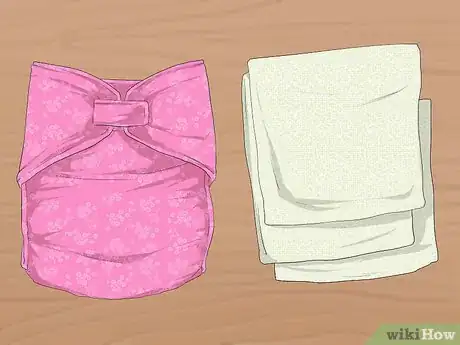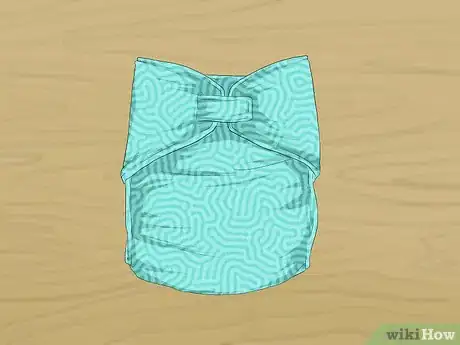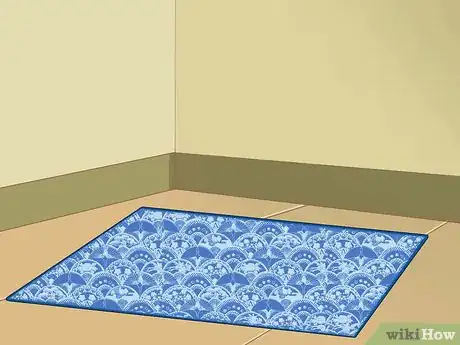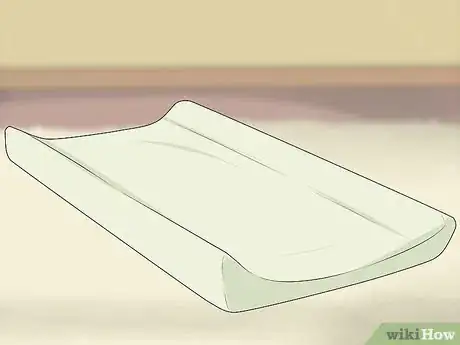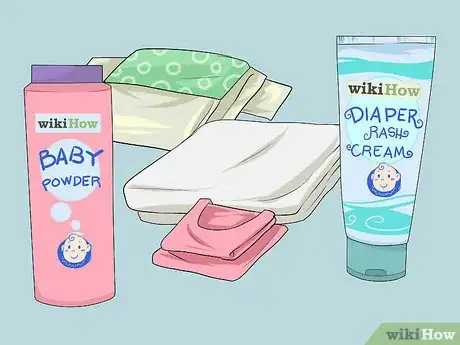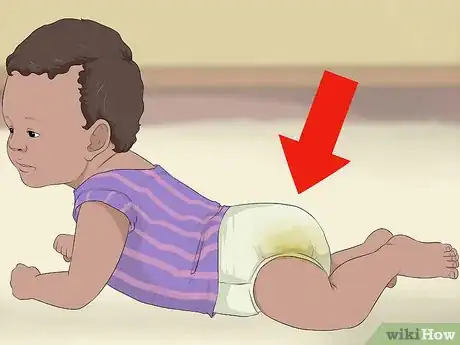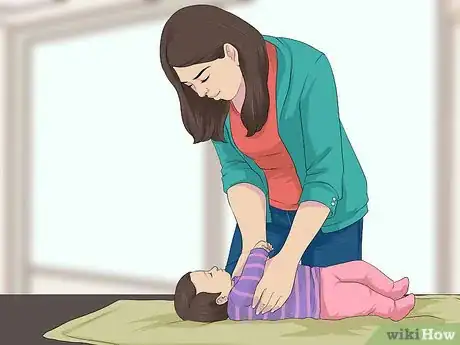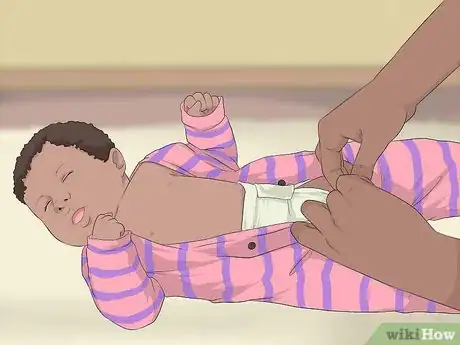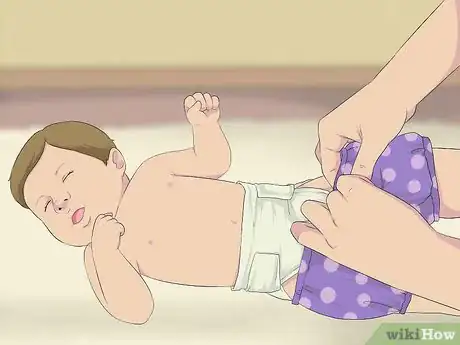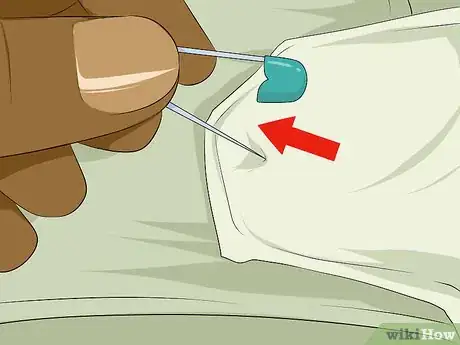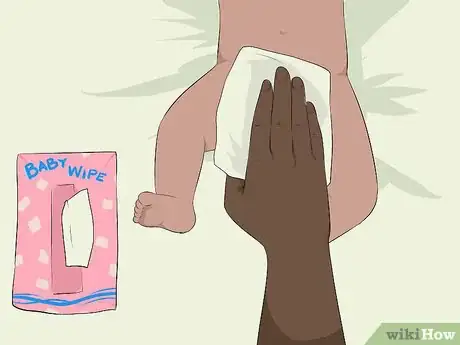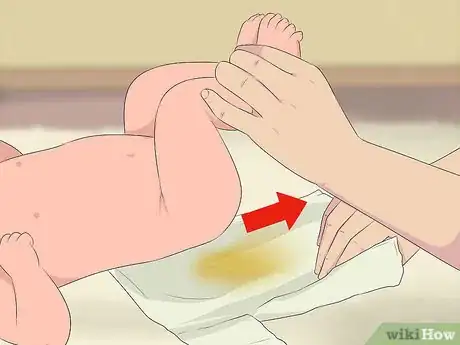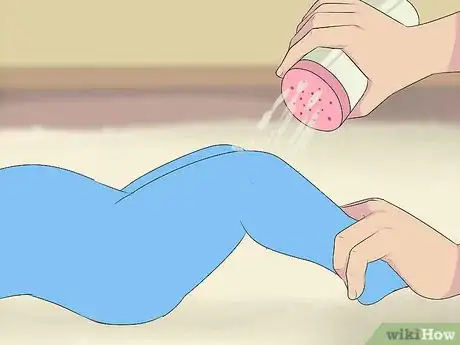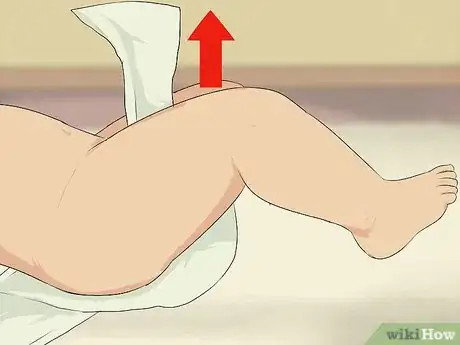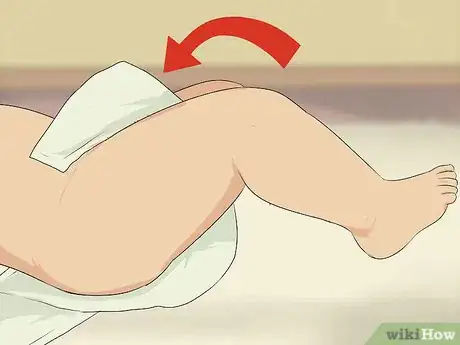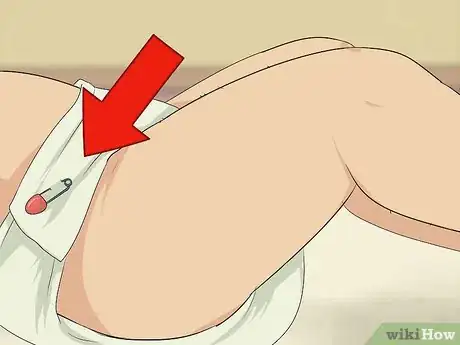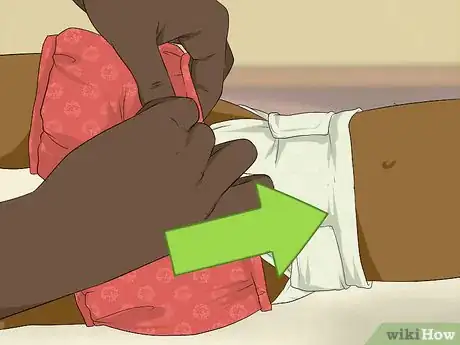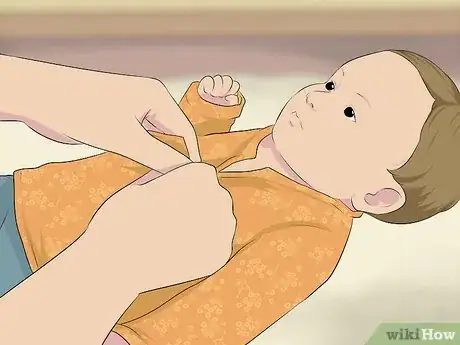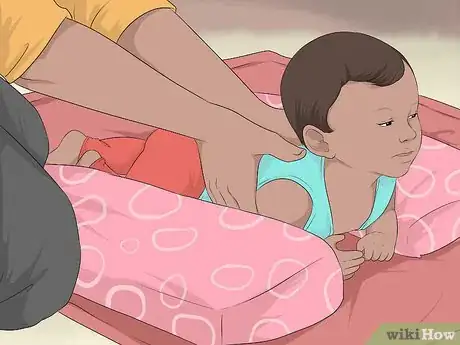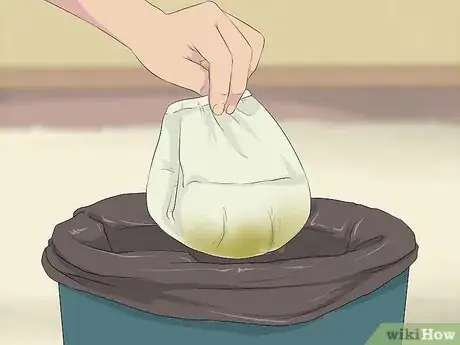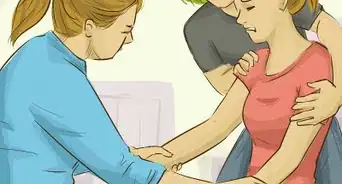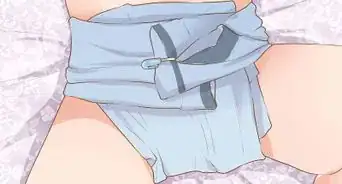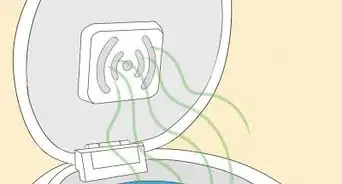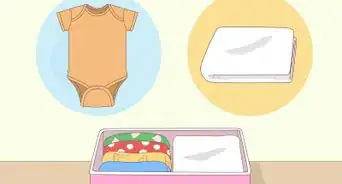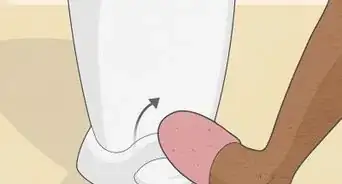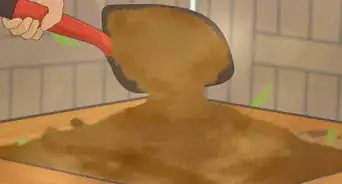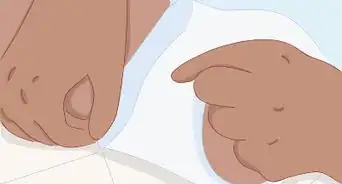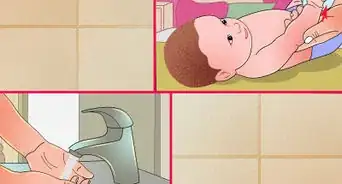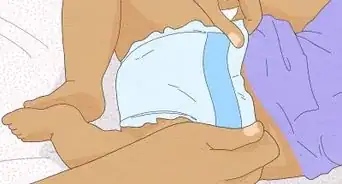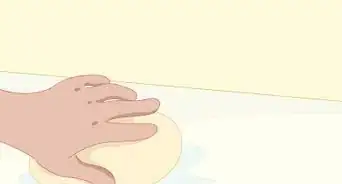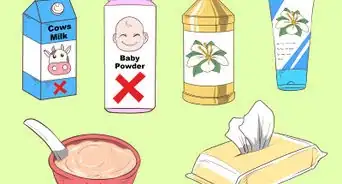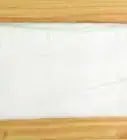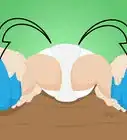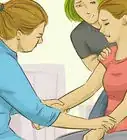This article was co-authored by Jami Yaeger. Jami Yaeger is a Parenting Specialist, Doula, and the Owner of AustinBorn, an online community offering comprehensive and modern education to growing families. With 10 years of experience, Jami specializes in whole family support for pregnancy, birth, postpartum, and parenting. Jami earned her BA in Theatre Performance from San Diego State University and earned her Certification as a Lactation Education Counselor from the University of California, San Diego. She is a Certified Infant and Child CPR Instructor, Birth and Postpartum Doula, and Childbirth Educator.
This article has been viewed 45,538 times.
No parent ever likes the endless cycle of changing diapers. But when it comes to cloth diapers, most parents shy away and think it's easier to use disposable diapers. If you haven't already decided otherwise towards or against using cloth diapers or have kept to using cloth diapers as a natural alternative diaper for your baby or infant, this article can explain the process to help you make an informed decision as to whether you should choose to use diapers. Yes, you'll have signed up for extra steps, but you've also signed to reduce waste and therefore keep the earth clean. If you are a first-time parent or need a set of refresher instructions, this article can help you learn how that type of diaper can be changed.
Steps
Preparing the Changing Area
-
1Determine which type of cloth diaper you want to use. You might choose to use the kind of flat cloth diaper that you fold and prepare yourself to get the desired shape, or you might use the pre-fitted cloth diapers, which already look like a diaper but can be rewashed and reused.
-
2Prepare a new, clean, fresh diaper for use, if necessary. Use the method provided in How to Fold a Cloth Diaper ahead of time, so you don't have to do this when you have a wiggly baby in front of you later. Babies love to wiggle and roll around on the changing table, so if you're ready to go with your diaper, you'll be able to keep them safer.Advertisement
-
3Choose a workable changing area to change the child’s diaper. You can do this on a changing mat on the floor and not have to worry about watching the child wiggle around as much, or you can use a diaper-changing table or even a bed or couch, depending on the size of the child.
-
4Protect the changing area from any mess. Lay a waterproof changing pad (such as those reusable pads included with most diaper bags) or Goodnites Underpads on the changing surface to prepare a mess-free changing environment.
-
5Prepare the changing area with all the necessary items for the diaper change. In addition to the diaper and the baby, you may need a second pair of rubber pants, one or two extra cloth diaper pins, a bottle of baby powder, a tube of diaper rash cream or similar, some cleaning cloths or baby wipes, and a fresh change of clothes. Place them all in the diaper changing area so you can grab the items one-handed without leaving the baby alone.
- Set up an easy-to-reach spot on the changing area where you can temporarily stash dirty items like the old diaper and any dirty clothing before cleaning them up properly after the change.
Preparing the Child
-
1Make sure the diaper needs changing. If you smell urine or poop in the diaper, or the diaper is sagging noticeably, it might be time for a change.
- Infants don't notice (and most don't care) when you feel around the top of the diaper to take a peek. You can usually also feel whether the diaper is full from the outside, with your hand.
-
2Bring your child over to the changing area. Lay them down on the pad so that their rear end is in the pad's center.
-
3Remove and set aside the child’s clothes as needed. Remove clothes that have become dirty and set them aside.[1] Work bottom to top, removing any pants and folding up any shirts/dresses if needed.
- If the child is wearing a onesie, you will need to roll that clothing up until it is out of the way of the diaper area. Use the Ankle Hold Technique as described to hold up the child’s leg while you pull the onesie up and out of the way.
-
4Remove the waterproof/rubber pants if they're wearing some. Rubber pants help protect the child's clothes from getting soaked. They can rip rather easily at the leg seems if removed too harshly, so be gentle.
- Let the rubber pant turn inside out as you pull them off the child. This can help you wash/dry them more easily, and you can flip them back the regular way around the next time you use them.
Removing the Old Diaper
-
1Remove any existent diaper pins from the child's cloth diaper. If the diaper doesn't use pins, look for a Velcro fastening or a pair of snaps along the child's waistline near the sides or front of the diaper. Undo the pins or snaps, or loosen the Velcro tabs. Just don't take the old diaper off just yet.
-
2Pull the diaper away from the center of the child’s stomach. Lay the front of the diaper back on the changing surface, so the diaper is flat.
- For boys, you may want to leave the diaper loosely in place until the last minute to prevent any spray if they urinate at the wrong time.
-
3Clean the child’s genital area with a baby wipe or wet cloth. You can use a wet, clean cloth if you prefer, or baby wipes.
- You can also use a clean and dry area of the old diaper to help absorb any leftover mess, but use a clean cloth to do the final cleanup for sanitary reasons.
- Use two warm, wet washcloths if you want to be more environmentally-friendly. Use the first washcloth to wipe off the most mess, and then use a second washcloth to finish cleaning the baby's bottom. Be sure the clothes are laundered well before next use.
- Make sure to keep the baby’s genital area covered with a cloth, as many babies will urinate into the air when exposed to the cooler air in the room. Clean your baby's front and back, making sure you get any mess that's hiding between folds of skin. For baby girls, make sure you wipe front to back to avoid infection.
-
4Swap out the old diaper for a new one. Raise the child's legs by holding their ankles to remove the diaper from the table, and swap out the old diaper for a new one. Place the new one underneath the child while taking out the old diaper and lowering the child's legs back to the surface. (You can always readjust the diaper's position later to re-center the diaper, if necessary.)
- Position it so that the center of the diaper's back is about on center with the child's bottom so that the back of the diaper will reach no higher than the child’s waistline.
- After pulling the child's legs up, you may want to fold up the old diaper so the diaper's front is holding onto any poop that may be inside the diaper. That way, you can put one hand underneath the bundled diaper, lift and drag the diaper away. Just be careful you don't drop any mess out.
- For those who choose to use pre-fold diapers with a Velcro or snap closing system, you may need to keep your hand outstretched inside the diaper until the child has been laid back down onto the surface, so the diaper doesn't fold back onto itself under the baby.
-
5Use powder or diaper cream if needed. Apply some diaper rash cream on their skin and/or place some powder down onto their cloth diaper and over their bottom to prepare the area if they're prone to diaper rash.
Securing the New Diaper
-
1Fold the diaper up and over until the diaper's top center is at the child’s waistline. Hold the diaper firmly as you move it around and place it properly. Lay the dry diaper temporarily on the child’s waist so that you can obtain the new pins or get ready to fix the new diaper up again.
-
2Flare out and position both sides of the diaper's back portion a little (if this diaper is not a folded/elasticated one). The number of diapers you flare back out at the bottom will depend on the child’s weight and width of their waistline.
- Only flare out and work with one side of the child's diaper at a time. You can repeat this for the other side later.
-
3Secure the diaper in place with diaper-pins or Velcro. Grab any two pins that aren't in use yet and secure the diaper, reversing the pin's removal from the preparatory steps above. Insert the pin into the diaper and close the pin. Do not push each pin through all the inner diaper layers, so you don't risk sticking yourself and your baby. Be sure to insert the end of the pins away from the child’s navel/belly button.
- Snap the diaper pins closed from both sides. Diaper pins are created with an open section in the pin-head. Push the pin around and into the head of the pin’s opening, and push inwards, so the pin-head covers this end of the pin.
Finishing and Cleaning Up
-
1Put on the waterproof/rubber pants if desired. If the rubber pants weren't wet when you removed them (or can be dried with a towel or paper towel easily), you could reuse the same pants. Otherwise, use another pair of rubber pants and add the older ones to the pile of clothing that needs to be washed.
-
2Dress the child. Replacing their pants and socks before folding back down their shirt. If the child was wearing a onesie and is still dry, lower it down and re-snap the garment in place.
-
3Remove the child from the changing area so you can clean up. If other people can help you, have them help watch your child and keep them busy.
-
4Clean up the changing area. Put the pile of wet clothes and dirty diaper in your hamper or diaper pail. Stowaway any extra pins, the diaper rash cream, and baby powder.
- Dispose of any poop by cleaning the cloth diaper inside a toilet. Then roll the diaper carefully up into a ball, and bring this diaper to the laundering station for washing.
Community Q&A
-
QuestionWhat if the baby's poop is stuck to the diaper?
 Community AnswerAs gross as it is, you should try to wipe off as much of it as you can with some toilet paper. I would then recommend washing the diapers out in the sink before giving them a run through the washing machine.
Community AnswerAs gross as it is, you should try to wipe off as much of it as you can with some toilet paper. I would then recommend washing the diapers out in the sink before giving them a run through the washing machine.
Warnings
- Try not to leave the baby in a wet diaper for too long. Cloth diapers have been known to hold urine close to the skin for longer periods of time. Leaving a baby in soaked diapers for long periods of time may cause a diaper rash. Check your child’s cloth diaper every thirty to forty-five minutes to ensure their diaper is still dry.⧼thumbs_response⧽
- Never leave a child on a changing table unattended for any reason. Even the youngest, tiniest babies can potentially roll themselves off the table and onto the ground in an instant and sustain very serious or life-threatening injuries. Falling off a changing surface from a high distance is one of the most common - and yet most preventable - infant injuries.⧼thumbs_response⧽
Things You'll Need
- 1-2 cloth diaper(s)
- 2-3 diaper pins to be used as the closure item
- Rubber pant
- Baby wipes
- Diaper pail
- Cover-cloth for boys diapers (optional)
- Zinc oxide/A&D ointment or Desitin (diaper-rash cream/ointment)
References
- ↑ Jami Yaeger. Parenting Specialist. Expert Interview. 29 September 2020.
- http://www.babycenter.com/0_how-to-fasten-a-cloth-diaper_3844.bc - research source
